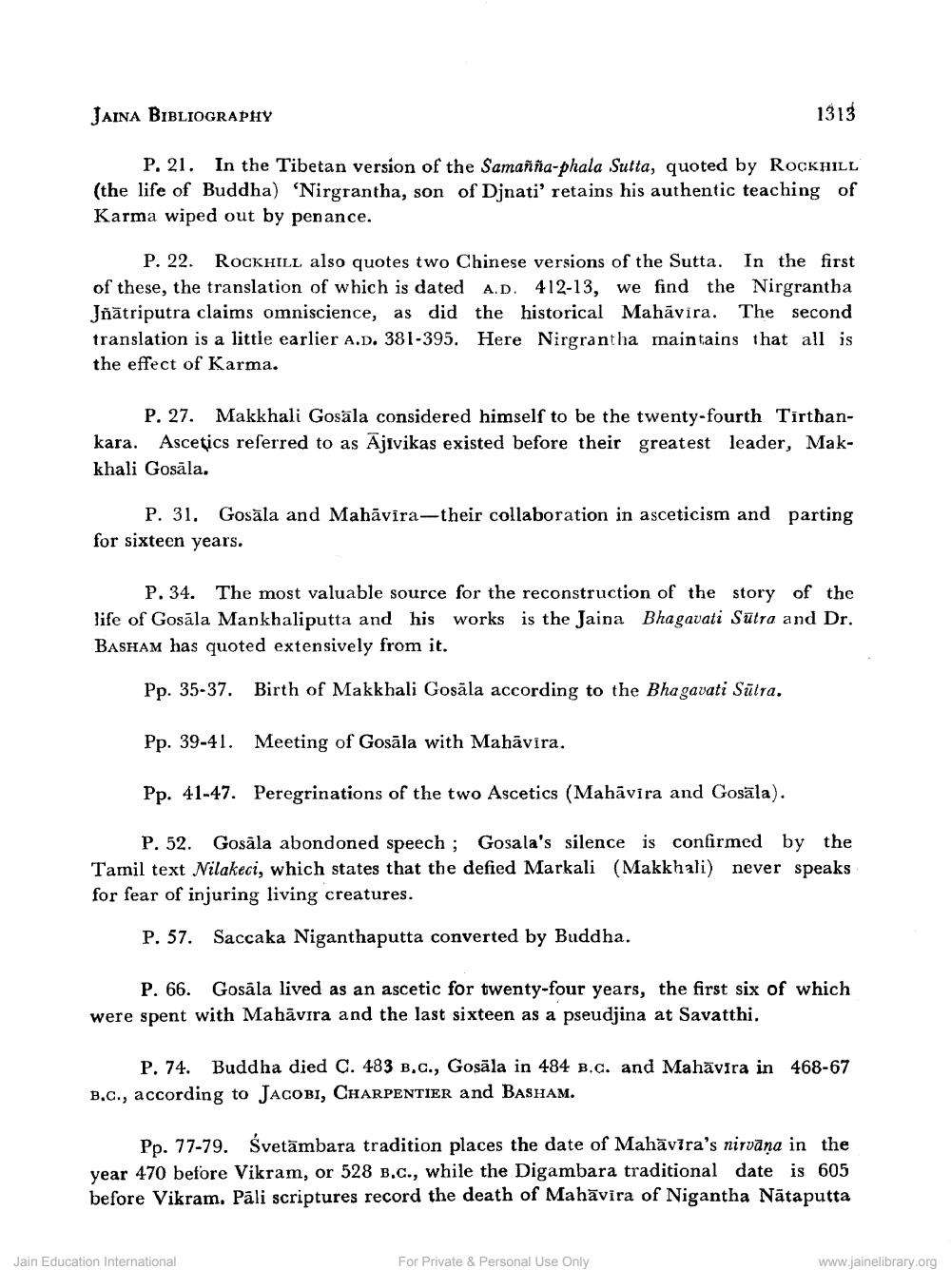________________
JAINA BIBLIOGRAPHY
1313
P, 21. In the Tibetan version of the Samañña-phala Sutta, quoted by RockHILL (the life of Buddha) 'Nirgrantha, son of Djnati' retains his authentic teaching of Karma wiped out by penance.
P. 22. ROCKHILL also quotes two Chinese versions of the Sutta. In the first of these, the translation of which is dated A.D. 412-13, we find the Nirgrantha Jñātriputra claims omniscience, as did the historical Mahāvira. The second translation is a little earlier A.D. 381-395. Here Nirgrantha maintains that all is the effect of Karma.
P. 27. Makkhali Gosāla considered himself to be the twenty-fourth Tirtbankara. Ascetics referred to as Ājivikas existed before their greatest leader, Makkhali Gosāla.
P. 31. Gosāla and Mahāvīra-their collaboration in asceticism and parting for sixteen years.
P. 34. The most valuable source for the reconstruction of the story of the life of Gosāla Mankhaliputta and his works is the Jaina Bhagavati Sūtra and Dr. BASHAM has quoted extensively from it.
Pp. 35-37. Birth of Makkhali Gosāla according to the Bhagavati Sūlra.
Pp. 39-41. Meeting of Gosāla with Mahavira.
Pp. 41-47. Peregrinations of the two Ascetics (Mahāvīra and Gosāla).
P. 52. Gosāla abondoned speech; Gosala's silence is confirmed by the Tamil text Nilakeci, which states that the defied Markali (Makkhali) never speaks for fear of injuring living creatures.
P. 57. Saccaka Niganthaputta converted by Buddha.
P. 66. Gosāla lived as an ascetic for twenty-four years, the first six of which were spent with Mahāvira and the last sixteen as a pseudjina at Savatthi.
P. 74. Buddha died C. 483 B.C., Gosāla in 484 B.c. and Mahāvīra in 468-67 B.C., according to JACOBI, CHARPENTIER and BASHAM.
Pp. 77-79. Svetāmbara tradition places the date of Mahāvīra's nirvāṇa in the year 470 before Vikram, or 528 B.C., while the Digambara traditional date is 605 before Vikram. Pāli scriptures record the death of Mahāvira of Nigantha Nātaputta
Jain Education International
For Private & Personal Use Only
www.jainelibrary.org




